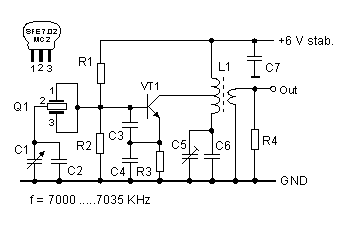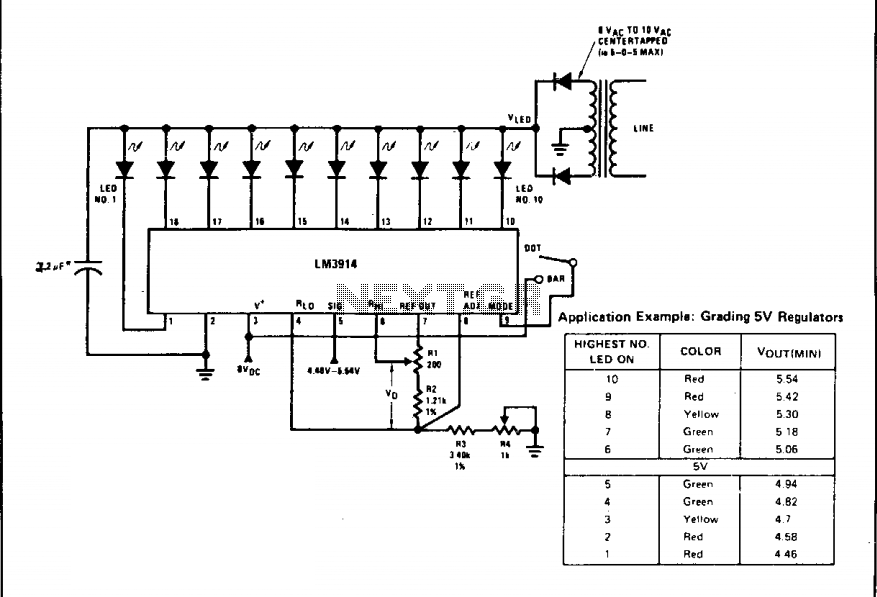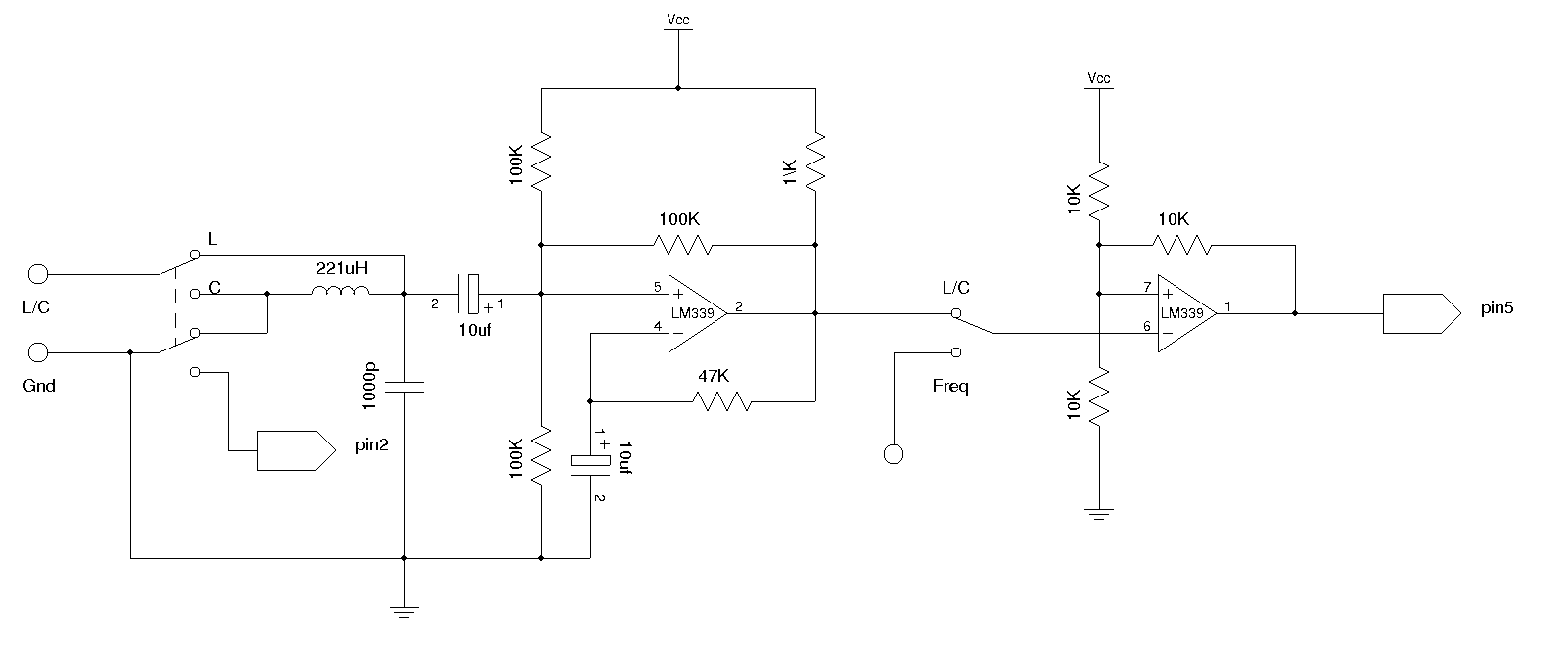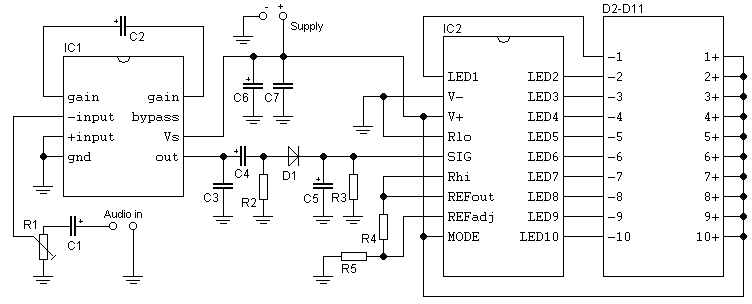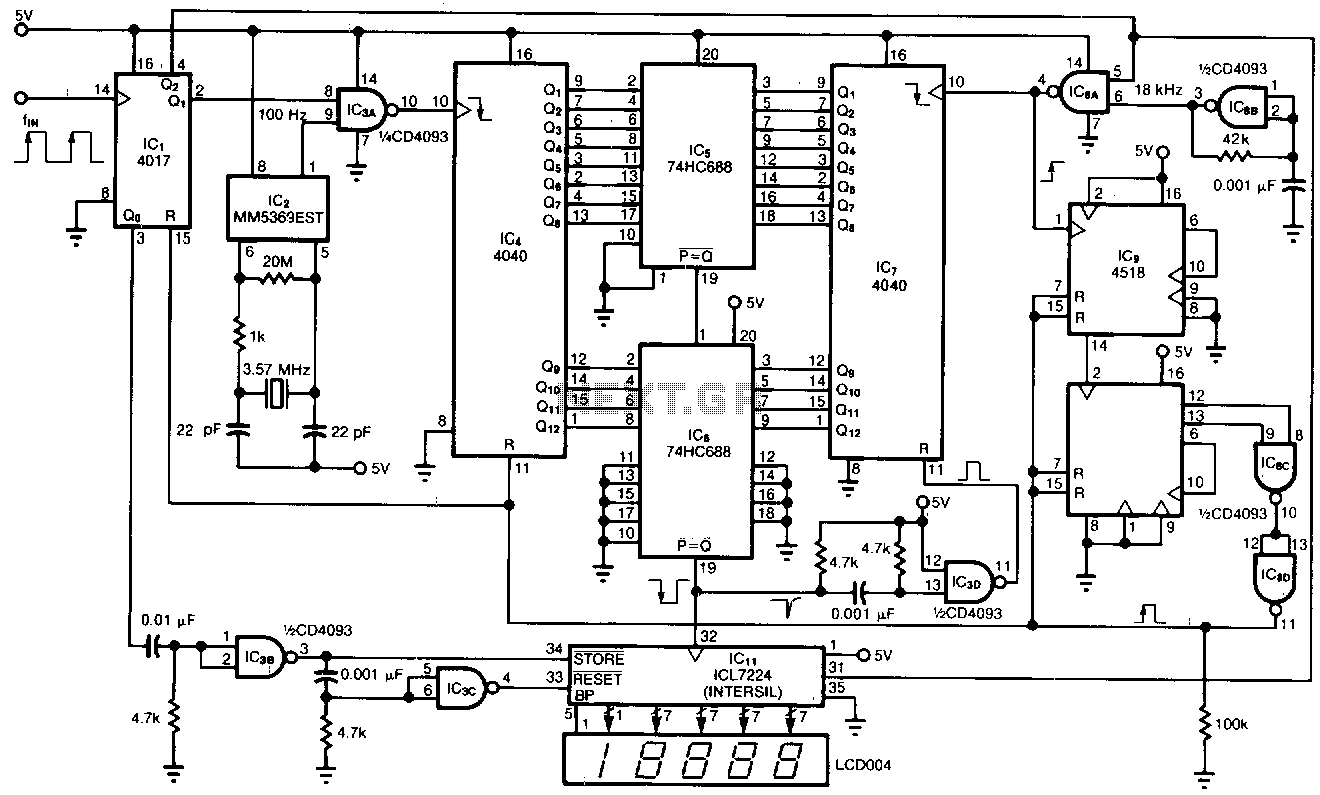
160 METER VFO
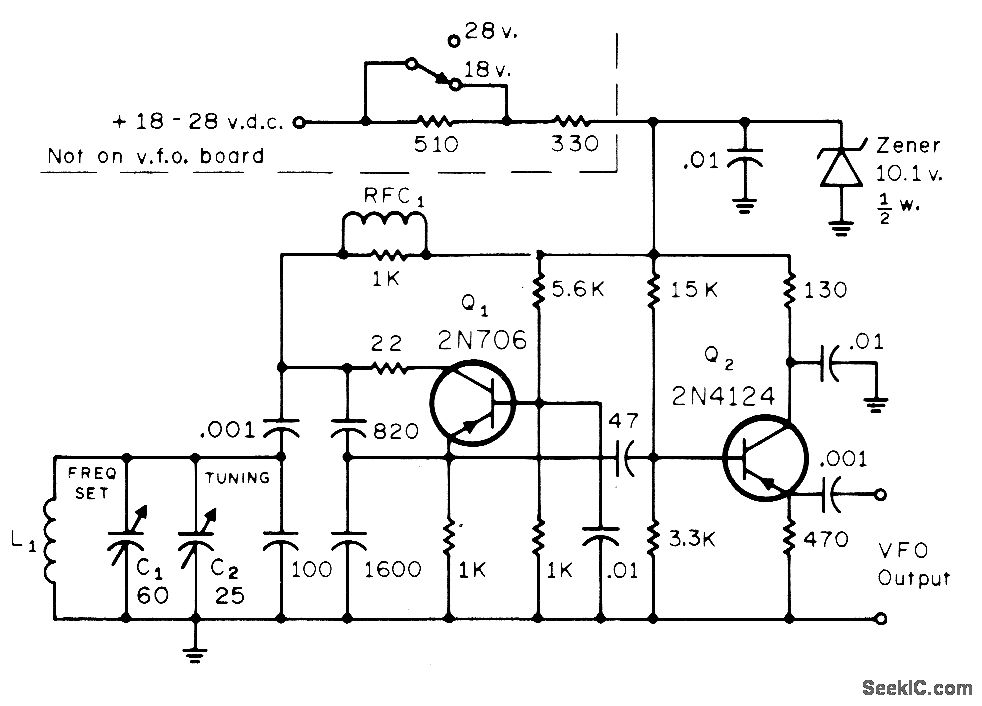
The circuit consists of a standard Colpitts oscillator (Q1) paired with an emitter-follower (Q2), providing reliable performance and sufficient isolation from subsequent stages. Zener regulation ensures stability, even in conditions of low battery voltage, producing an output of approximately 0.7 VRMS. There is a potential for low-level parasitic oscillation around 150 kHz below the operating frequency; however, this is mitigated by the tuned stages that follow the voltage-frequency oscillator (VFO). The inductor L1 is composed of 52 turns of No. 28 enamel wire wound on an Amidon T-50-2 toroid. The radio frequency choke (RFC1) has an inductance of 850 μH. This design is referenced in the work of A. Weiss, titled "Design Notes on a Moderate Power Solid State Transmitter for 1.8 MHz," published in CQ magazine in November 1972.
The Colpitts oscillator configuration is characterized by its use of a combination of capacitors and an inductor to establish the resonant frequency, which is determined by the values of these components. In this circuit, Q1 serves as the active component, providing gain and oscillation, while Q2 functions as an emitter-follower, buffering the output and ensuring that the load does not affect the oscillator's performance. The use of Zener diodes for voltage regulation is critical in maintaining a consistent output voltage, which is especially important in battery-operated devices where voltage levels may fluctuate.
The output voltage of approximately 0.7 VRMS indicates that the oscillator is designed to deliver a modest signal level, suitable for driving subsequent stages without distortion. The potential for parasitic oscillation is a common concern in oscillator designs, particularly in high-frequency applications. The tuned stages that follow the VFO are essential for filtering out these unwanted oscillations, ensuring that only the desired frequency is amplified and transmitted.
The choice of L1, with its specific winding parameters, plays a significant role in defining the oscillator's performance. The use of No. 28 enamel wire on an Amidon T-50-2 toroid ensures efficient magnetic coupling and minimizes losses, which is crucial for achieving the desired frequency stability and output power. RFC1, with its inductance value of 850 μH, acts as a choke to block high-frequency noise while allowing the desired signal to pass through, further enhancing the overall performance of the circuit.
In summary, this Colpitts oscillator design demonstrates a well-thought-out approach to achieving stable oscillation and reliable performance in a moderate power solid-state transmitter application, as detailed in the referenced literature. The integration of Zener regulation and careful component selection contributes to the robustness of the circuit, making it suitable for various RF applications.Standard Colpitts oscillator Q1 with emitter-follower Q2 gives dependability and adequate isolation from later stages Zener regulation provides stability even with weak battery Output is about 0. 7 VRMS. Low-level parasitic oscillation may occur about 150 kHz below operating frequency but is suppressed by tuned stages following VFO.
L1 is 52 turns No. 28 enamel on Amidon T-50-2 toroid. RFC1 is 850 H. -A Weiss, Design Notes on a Moderate Power Solid State Transmitter for 1. 8 MHz, CQ, Nov. 1972, p 18-22, 24, 98, 100, and 102. 🔗 External reference
The Colpitts oscillator configuration is characterized by its use of a combination of capacitors and an inductor to establish the resonant frequency, which is determined by the values of these components. In this circuit, Q1 serves as the active component, providing gain and oscillation, while Q2 functions as an emitter-follower, buffering the output and ensuring that the load does not affect the oscillator's performance. The use of Zener diodes for voltage regulation is critical in maintaining a consistent output voltage, which is especially important in battery-operated devices where voltage levels may fluctuate.
The output voltage of approximately 0.7 VRMS indicates that the oscillator is designed to deliver a modest signal level, suitable for driving subsequent stages without distortion. The potential for parasitic oscillation is a common concern in oscillator designs, particularly in high-frequency applications. The tuned stages that follow the VFO are essential for filtering out these unwanted oscillations, ensuring that only the desired frequency is amplified and transmitted.
The choice of L1, with its specific winding parameters, plays a significant role in defining the oscillator's performance. The use of No. 28 enamel wire on an Amidon T-50-2 toroid ensures efficient magnetic coupling and minimizes losses, which is crucial for achieving the desired frequency stability and output power. RFC1, with its inductance value of 850 μH, acts as a choke to block high-frequency noise while allowing the desired signal to pass through, further enhancing the overall performance of the circuit.
In summary, this Colpitts oscillator design demonstrates a well-thought-out approach to achieving stable oscillation and reliable performance in a moderate power solid-state transmitter application, as detailed in the referenced literature. The integration of Zener regulation and careful component selection contributes to the robustness of the circuit, making it suitable for various RF applications.Standard Colpitts oscillator Q1 with emitter-follower Q2 gives dependability and adequate isolation from later stages Zener regulation provides stability even with weak battery Output is about 0. 7 VRMS. Low-level parasitic oscillation may occur about 150 kHz below operating frequency but is suppressed by tuned stages following VFO.
L1 is 52 turns No. 28 enamel on Amidon T-50-2 toroid. RFC1 is 850 H. -A Weiss, Design Notes on a Moderate Power Solid State Transmitter for 1. 8 MHz, CQ, Nov. 1972, p 18-22, 24, 98, 100, and 102. 🔗 External reference

